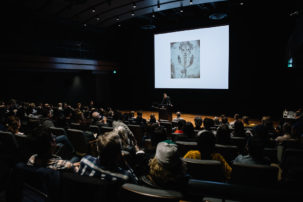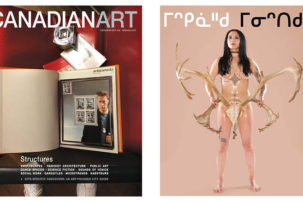Jeremy Bailey is a Toronto video and performance artist who is becoming well known for his humorous approach to online culture and art traditions.
In the past few years, he has performed or exhibited at a variety venues and events, including Transmediale in Berlin, Frieze Art Fair in London, the New Museum in New York and the Nam June Paik Art Center in Seoul.
Whether creating a virtual version of himself to answer press and fan queries, or creating software that allows him to turn his body into an immaterial “public sculpture” on YouTube, Bailey ably meshes satirical strategies with technological know-how.
“When I started out making video art in the 1990s, the Internet wasn’t really important to video artists,” Bailey says. “But by the time I was in grad school, YouTube had launched. I started making artwork using the Internet as a camera—that was a huge shift in my thinking.”
Bailey notes his approach was influenced by Canadian artists who had already built significant practices or theories around performing for the camera—people like Lisa Steele and Colin Campbell, who were his instructors during an undergrad degree at the University of Toronto, and Tom Sherman, who was his professor during a master’s program at Syracuse University.
A longtime love of computers has also been a driving force for the artist; he got his first computer, a Mac, when he was just six years old.
“For my whole young life, I think I apologized for being a nerd,” he says. “But the day I decided my ‘weakness’ was probably my greatest strength was the best day of my life.”
Now, Bailey balances his art production with work at a software company—the perfect gig for an artist who has long been engaged by technology.
“For me, [the Internet] is where almost all cultural activity occurs. It’s like the Parisian café of the 1920s, or New York in the 1960s.”
However, Bailey’s clear that one doesn’t need high-end tech skills to make cogent art about the Web.
“I think most successful art is art that’s critical and really engaged with its form,” he says. “I don’t think you need to be tech-savvy to have a critical point of view.”

 Artist Jeremy Bailey
Artist Jeremy Bailey







